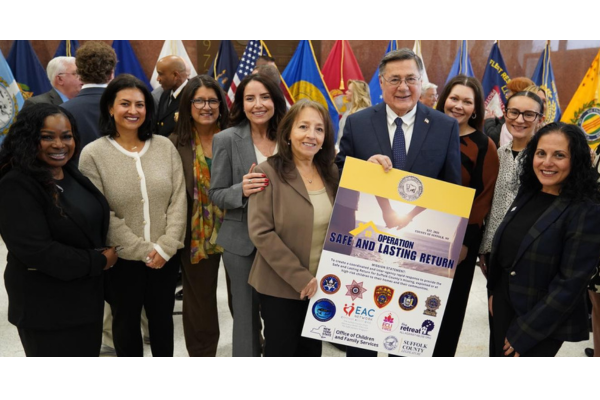By Staff Writer
The Retreat offers staff members a window into the worlds of their co-workers through our monthly Lunch and Learn series. In January, the Advocacy staff took the lead.

Our team of four advocates, two of whom are bilingual, assist survivors of domestic abuse and sexual assault with understanding their legal rights regarding orders of protection, custody and visitation, child support, and other legal matters, and help them navigate the family court system.
While they accompany clients to court and document court appearances, advocates are not attorneys and cannot provide legal advice or representation.
“We’re really there to provide that emotional support and that’s part of our navigation of the system,” said Stacy, Director of Advocacy.
When a client first reaches out, Advocacy does not require any supporting documentation. Advocates work with each person to log incidents and fill out court petitions. These require robust documentation, including printed text messages and police reports if available. In family court, the burden is always on the victim to prove.
“We recommend to our clients to keep a journal,” said Stacy. “A journal is an extremely useful tool to write down all of the incidents. This is what we use to create the petition.” However, it can be dangerous if it’s discovered by the abuser, so victims should keep it hidden or give it to a trusted person for safekeeping.
One of the biggest challenges advocates face is threats to their and/or their clients’ safety.
“We are face to face with the abusers every time we go to court,” said Stacy, adding that they might be berated, cursed at, or even followed back to the office. As a result, they always make plans for their own safety, including arranging for accompaniment to exit the court building.
The most dangerous time for a victim is when they first leave a relationship. And filing for an Order of Protection can be a trigger for the abuser. In the courtroom, abusers often sit close to the clients to intimidate, scare, or try to make them feel guilty so that they will not go through with the legal proceeding.
Advocates create detailed safety plans for their clients that cover the court process and include emergency backpacks and documents in case the client has to flee a dangerous situation. These plans are individualized and fluid as the situation evolves.
For all of the challenges advocates face, the reward of seeing a past client living the life they fought for and efficiently advocating for themselves makes it all worthwhile.
